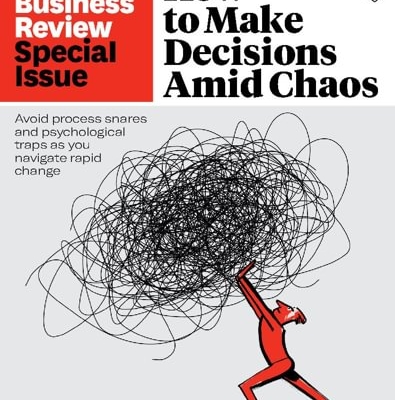 https://www.afterburner.com/wp-content/uploads/2025/05/Flawless-Execution-prevents-Cognitive-Decline.jpg
1365
2048
Ansley Anchors
/wp-content/uploads/2024/07/Afterburner-Logo-Resize-Fullcolor-300x93.png
Ansley Anchors2025-05-29 10:02:192025-06-30 15:56:10How FLEX Helps Leaders Combat the Cognitive Decline Epidemic
https://www.afterburner.com/wp-content/uploads/2025/05/Flawless-Execution-prevents-Cognitive-Decline.jpg
1365
2048
Ansley Anchors
/wp-content/uploads/2024/07/Afterburner-Logo-Resize-Fullcolor-300x93.png
Ansley Anchors2025-05-29 10:02:192025-06-30 15:56:10How FLEX Helps Leaders Combat the Cognitive Decline Epidemic
Waste reduction is not a pillar of Lean. It is an outcome. Lean is best summarized as respect for people and continuous process improvement (CPI). Unfortunately many Lean thinkers believe Lean is about the reduction of waste. If you are like me you can probably recite seven of the eight or so common wastes associated with Lean but you have to be reminded about the Lean pillars: respect for people and continuous process improvement.
Like Lean, Flawless Execution, a ubiquitous Agile and Continuous Process Improvement model, is built on a people-focused or a respect for people platform. The Flawless Execution Platform includes people, training, and standards. You may know that the research presented in Daniel H. Pink’s book, Drive: The Surprising Truth About What Motivates Us, shows there are three factors that lead to better performance (executing flawlessly) and personal satisfaction; these respect for people factors, if you will, are autonomy, mastery, and purpose [1]. The Flawless Execution Platform addresses two of these factors: autonomy (people) and mastery (training & standards). The third respect for people factor, Purpose, sits atop the Flawless Execution pyramid or triangle (High-Definition Destination, Strategy, and Leaders’ Intent).
In Lean, continuous improvement is sometimes referred to as kaizen. In Flawless Execution (FLEX), CPI is in the Plan-Brief-Execute-Debrief-Win Process or engine found at the center of the FLEX pyramid. Lean tells us that the real value of continuous improvement is creating a learning environment or culture. Flawless Execution shows you how to create an innovative and learning culture with simple, scalable, and repeatable leadership patterns to be used as fractal, self-similar activities at all levels of the organization. Like Lean, FLEX is a holistic Agile approach but makes cargo cult adoption problematic.
Lean supports the idea of codifying simple, proven, and repeatable leadership patterns. The Agile or Lean leadership patterns codified in Flawless Execution cover the most basic leadership skills needed for any organization to think big, start small, and learn fast. These leadership patterns include how to plan, how to communicate, how to execute, and how to assess. When you go deeper, the FLEX leadership patterns turn managers into servant leaders as FLEX shows future agile leaders how to leverage the wisdom of crowds, create psychological safety, mitigate the four failures of groups, include rookies, become self-silencing leaders, align the organization to clear, measureable, and achievable objectives, build a cadence or execution rhythm, use Teamstorming over brainstorming, manage time, and help overcome being Task Saturated.
Flawless Execution, unlike some people in the Scrum and the wider Agile community, does not villainize managers as impediments to Agile transformation.
Flawless Execution, unlike some people in the Scrum and the wider Agile community, does not villainize managers as impediments to Agile transformation. Instead, FLEX is aligned with the Lean principles of building leader-teachers from within and developing exceptional people.
Flawless Execution Gives You the Tools to Reach Success
Lean and Flawless Execution are about people and continuous improvement. Lean tells you what to do and FLEX shows you how. If you are trying to accelerate your Agile or CPI journey, whether it is in tech, marketing, sales, operations, sports, education, health care, government, HR, financial services, e-commerce, or oil and gas, take a minute to reflect on what you know about Lean and executing flawlessly.
Brian “Ponch” Rivera is a recovering Naval Aviator and current Afterburner, Inc. Enterprise Agile Coach and Executive Consultant who specializes in accelerating organizational agility with the simple tools found in the Flawless Execution℠ Model. Contact [email protected] for additional information.
[1] Daniel H. Pink. Drive: The Surprising Truth About What Motivates Us. (Riverhead, 2011)
Share This Post
More Like This
 https://www.afterburner.com/wp-content/uploads/2025/05/Flawless-Execution-prevents-Cognitive-Decline.jpg
1365
2048
Ansley Anchors
/wp-content/uploads/2024/07/Afterburner-Logo-Resize-Fullcolor-300x93.png
Ansley Anchors2025-05-29 10:02:192025-06-30 15:56:10How FLEX Helps Leaders Combat the Cognitive Decline Epidemic
https://www.afterburner.com/wp-content/uploads/2025/05/Flawless-Execution-prevents-Cognitive-Decline.jpg
1365
2048
Ansley Anchors
/wp-content/uploads/2024/07/Afterburner-Logo-Resize-Fullcolor-300x93.png
Ansley Anchors2025-05-29 10:02:192025-06-30 15:56:10How FLEX Helps Leaders Combat the Cognitive Decline Epidemic https://www.afterburner.com/wp-content/uploads/2024/09/Christian-_Boo_-Boucousis-on-stage-1.jpeg
1066
1600
Nate Riggins
/wp-content/uploads/2024/07/Afterburner-Logo-Resize-Fullcolor-300x93.png
Nate Riggins2024-12-19 14:08:102025-06-30 15:56:14How to Pick the Right Guest Speaker for Your Event
https://www.afterburner.com/wp-content/uploads/2024/09/Christian-_Boo_-Boucousis-on-stage-1.jpeg
1066
1600
Nate Riggins
/wp-content/uploads/2024/07/Afterburner-Logo-Resize-Fullcolor-300x93.png
Nate Riggins2024-12-19 14:08:102025-06-30 15:56:14How to Pick the Right Guest Speaker for Your Event https://www.afterburner.com/wp-content/uploads/2024/09/Audience-reaction-2.jpeg
1365
2048
Nate Riggins
/wp-content/uploads/2024/07/Afterburner-Logo-Resize-Fullcolor-300x93.png
Nate Riggins2024-02-09 17:02:342025-06-30 15:56:15Four Key Items to Include in Your Next Corporate Event
https://www.afterburner.com/wp-content/uploads/2024/09/Audience-reaction-2.jpeg
1365
2048
Nate Riggins
/wp-content/uploads/2024/07/Afterburner-Logo-Resize-Fullcolor-300x93.png
Nate Riggins2024-02-09 17:02:342025-06-30 15:56:15Four Key Items to Include in Your Next Corporate Event https://www.afterburner.com/wp-content/uploads/2024/09/embracing-failure-afterburner-1-scaled-1.jpg
1920
2560
Nate Riggins
/wp-content/uploads/2024/07/Afterburner-Logo-Resize-Fullcolor-300x93.png
Nate Riggins2024-01-09 22:52:542025-06-30 15:56:15Reimagining Your Sales Kickoff: Infusing Innovation and Connection
https://www.afterburner.com/wp-content/uploads/2024/09/embracing-failure-afterburner-1-scaled-1.jpg
1920
2560
Nate Riggins
/wp-content/uploads/2024/07/Afterburner-Logo-Resize-Fullcolor-300x93.png
Nate Riggins2024-01-09 22:52:542025-06-30 15:56:15Reimagining Your Sales Kickoff: Infusing Innovation and Connection https://www.afterburner.com/wp-content/uploads/2024/09/fortune-cookies-1400x933-1.jpeg
933
1400
Nate Riggins
/wp-content/uploads/2024/07/Afterburner-Logo-Resize-Fullcolor-300x93.png
Nate Riggins2024-01-02 18:24:072025-06-30 15:56:16Want to make better business predictions? Flawless Execution is the answer.
https://www.afterburner.com/wp-content/uploads/2024/09/fortune-cookies-1400x933-1.jpeg
933
1400
Nate Riggins
/wp-content/uploads/2024/07/Afterburner-Logo-Resize-Fullcolor-300x93.png
Nate Riggins2024-01-02 18:24:072025-06-30 15:56:16Want to make better business predictions? Flawless Execution is the answer. https://www.afterburner.com/wp-content/uploads/2024/09/three-fighter-jets-maneuvering-in-sequence-min-1.jpeg
1133
1920
Nate Riggins
/wp-content/uploads/2024/07/Afterburner-Logo-Resize-Fullcolor-300x93.png
Nate Riggins2024-01-02 16:08:452025-06-30 15:56:16How to Build Accountability in the Workplace – and Why It Matters
https://www.afterburner.com/wp-content/uploads/2024/09/three-fighter-jets-maneuvering-in-sequence-min-1.jpeg
1133
1920
Nate Riggins
/wp-content/uploads/2024/07/Afterburner-Logo-Resize-Fullcolor-300x93.png
Nate Riggins2024-01-02 16:08:452025-06-30 15:56:16How to Build Accountability in the Workplace – and Why It Matters https://www.afterburner.com/wp-content/uploads/2024/09/purposeful-action-afterburner-1.jpg
1080
1920
Nate Riggins
/wp-content/uploads/2024/07/Afterburner-Logo-Resize-Fullcolor-300x93.png
Nate Riggins2023-12-21 15:23:142025-06-30 15:56:17Unlocking the Power of Purposeful Action in Work and Life
https://www.afterburner.com/wp-content/uploads/2024/09/purposeful-action-afterburner-1.jpg
1080
1920
Nate Riggins
/wp-content/uploads/2024/07/Afterburner-Logo-Resize-Fullcolor-300x93.png
Nate Riggins2023-12-21 15:23:142025-06-30 15:56:17Unlocking the Power of Purposeful Action in Work and Life https://www.afterburner.com/wp-content/uploads/2024/09/how-to-make-better-decisions-afterburner-1.jpg
1080
1920
Nate Riggins
/wp-content/uploads/2024/07/Afterburner-Logo-Resize-Fullcolor-300x93.png
Nate Riggins2023-12-12 17:38:372025-06-30 15:56:17Empowering Decisions Through Debrief Culture
https://www.afterburner.com/wp-content/uploads/2024/09/how-to-make-better-decisions-afterburner-1.jpg
1080
1920
Nate Riggins
/wp-content/uploads/2024/07/Afterburner-Logo-Resize-Fullcolor-300x93.png
Nate Riggins2023-12-12 17:38:372025-06-30 15:56:17Empowering Decisions Through Debrief Culture
Mastering Decision-Making in a World of Chaos: Lessons from Harvard Business Review Magazine
Business Culture, Leadership, MotivationAbout Us
Building Strong Teams Through the Guidance of Fighter Pilot Keynote Speakers.


